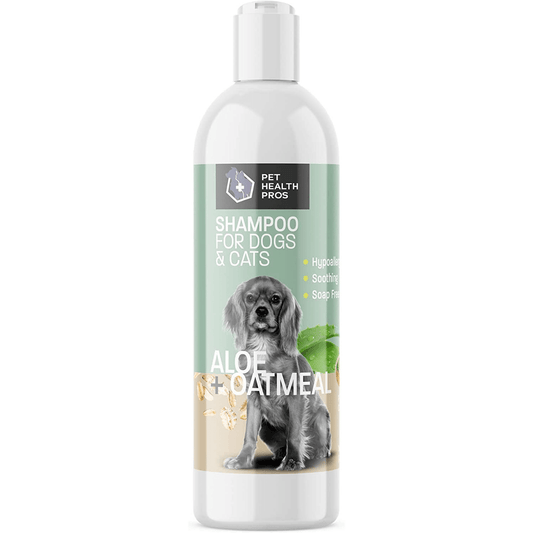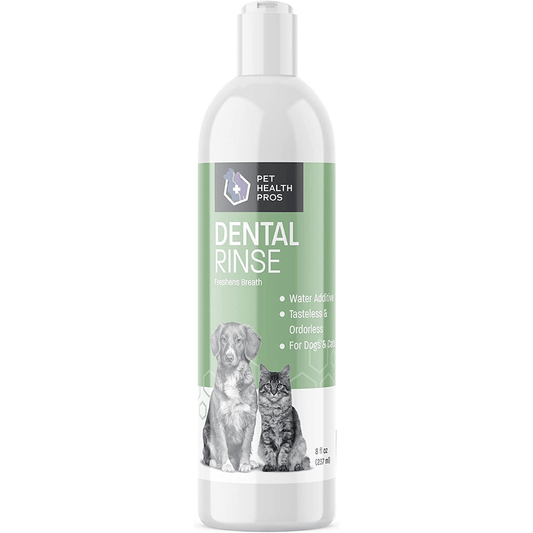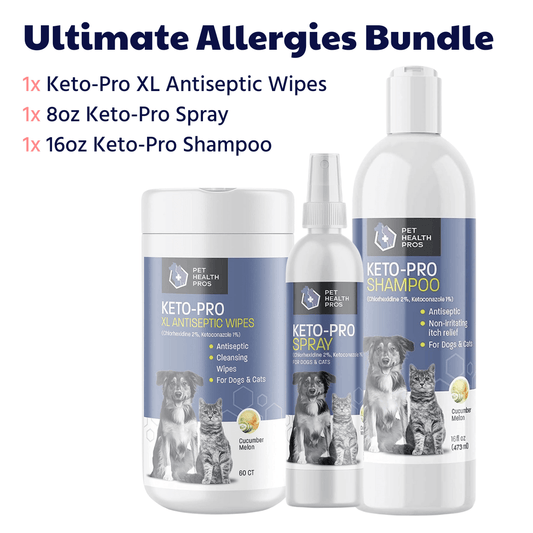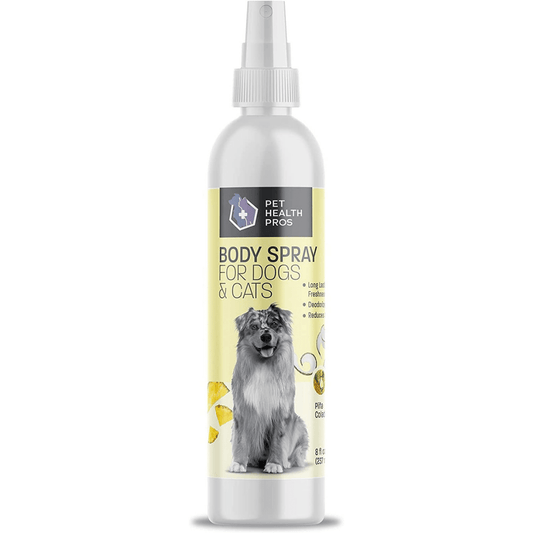Dry skin in cats can be a common yet uncomfortable issue, affecting their quality of life. Understanding the signs, causes, and effective remedies is crucial for pet owners to ensure their feline friends maintain healthy, hydrated skin. This article delves into various aspects of managing dry skin in cats, from dietary improvements to environmental adjustments, offering a comprehensive guide to tackling this condition.
Key Takeaways
- Identifying the signs of dry skin in cats is the first step towards treatment, including dandruff, itching, and dull coat.
- Improving your cat's diet with omega-3 fatty acids and ensuring proper hydration can significantly impact skin health.
- Topical treatments like moisturizing shampoos and supplements can provide relief and aid in skin recovery.
- Environmental adjustments, such as maintaining optimal humidity levels and using the right grooming tools, can prevent dry skin.
- In cases where dry skin persists, seeking veterinary care is essential to rule out underlying health issues and receive appropriate treatment.
Understanding Dry Skin in Cats
Identifying the Signs of Dry Skin
Identifying the signs of dry skin in cats is crucial for early intervention and effective management. The most common indicators include excessive scratching, dandruff, and a dull coat. These symptoms can cause discomfort and may lead to more serious skin conditions if not addressed promptly.
Cats with dry skin may also exhibit patches of hair loss, redness, or inflammation, signaling the need for immediate care. It's important to observe your cat's behavior and physical condition closely to detect these early signs of skin issues.
Note: Always consult with a veterinarian if you notice any abrupt changes in your cat's skin or coat condition.
Understanding the specific needs of your feline friend's skin can significantly improve their quality of life. Regular grooming and monitoring for any signs of discomfort can help in preventing dry skin issues.
Common Causes of Dry Skin in Felines
Dry skin in cats can be attributed to a variety of factors, ranging from environmental conditions to dietary deficiencies. Understanding these causes is crucial for effective treatment and prevention.
- Environmental factors: Low humidity, especially during winter months, can lead to dry skin. Exposure to excessive sun or wind can also exacerbate the condition.
- Nutritional deficiencies: A lack of essential fatty acids in the diet is a common cause. Omega-3 and Omega-6 fatty acids are particularly important for maintaining healthy skin.
- Health issues: Certain medical conditions, such as diabetes or thyroid disorders, can cause dry skin. Parasitic infections, like fleas or mites, can also contribute to the problem.
- Grooming habits: Over-bathing or using harsh grooming products can strip the skin of its natural oils, leading to dryness.
It's important to identify the underlying cause of dry skin in your cat to choose the most effective treatment. Consulting with a veterinarian can provide tailored advice based on your cat's specific needs.
By addressing these common causes, cat owners can take proactive steps to improve their pet's skin health. Ensuring a balanced diet rich in essential fatty acids, using gentle grooming products, and maintaining a comfortable environment are key strategies.
Initial Steps for Treating Dry Skin
Improving Your Cat's Diet
Improving your cat's diet is a fundamental step towards addressing dry skin issues. A diet rich in essential fatty acids, particularly omega-3 and omega-6, can significantly enhance the health of your cat's skin and coat. These nutrients help in maintaining the skin's natural oils, thus preventing dryness. Incorporating high-quality commercial cat food that specifies skin and coat health benefits can make a noticeable difference.
Consider the following sources of essential fatty acids for your cat:
- Fish oil supplements
- Flaxseed oil
- Specially formulated cat foods with omega-3 and omega-6
It's crucial to consult with a veterinarian before making any significant changes to your cat's diet, especially if introducing supplements. This ensures the adjustments are safe and beneficial for your cat's specific health needs.
Remember, a well-balanced diet not only supports skin health but also contributes to overall well-being, making it an essential aspect of caring for your cat.
Ensuring Proper Hydration
Proper hydration is crucial for maintaining healthy skin in cats. Cats often have a low thirst drive, which means they do not always drink enough water to meet their needs. This can lead to dehydration, contributing to dry skin and other health issues. To ensure your cat stays properly hydrated, consider the following tips:
- Provide fresh, clean water at all times, and place water bowls in multiple locations around your home.
- Consider using a cat water fountain, which can encourage cats to drink more due to the moving water.
- Incorporate wet food into your cat's diet, as it has a higher moisture content than dry food.
Ensuring your cat has access to clean water and a moisture-rich diet can significantly impact their skin health.
Remember, each cat is unique, and what works for one may not work for another. Observing your cat's behavior and preferences will help you tailor a hydration strategy that best suits their needs. Personalized care is essential in preventing and treating dry skin in cats.
Topical Treatments and Remedies
Using Omega-3 Fatty Acid Supplements
Omega-3 fatty acids are essential nutrients that play a crucial role in maintaining a cat's skin health. These nutrients, found in fish oil and certain plant oils, help to nourish the skin and coat, reducing dryness and promoting a healthy shine. Incorporating omega-3 supplements into your cat's diet can significantly improve skin conditions and overall health.
Omega-3 supplements are available in various forms, including capsules, liquid oils, and specially formulated pet foods. It's important to choose a product that is specifically designed for cats to ensure the correct dosage and safety.
Omega-3 fatty acids are not only beneficial for skin health but also support heart health, joint function, and cognitive function in cats. Here is a simple list to help you get started:
- Consult with your veterinarian to determine the appropriate dosage for your cat.
- Opt for high-quality omega-3 supplements that are free from contaminants.
- Introduce the supplement gradually to your cat's diet to monitor for any adverse reactions.
By following these steps and ensuring your cat receives the right amount of omega-3 fatty acids, you can help alleviate dry skin issues and contribute to their overall well-being.
Applying Moisturizing Cat Shampoos
When it comes to managing dry skin in cats, applying moisturizing cat shampoos can be a game-changer. These specialized shampoos are formulated to hydrate the skin, relieve itchiness, and promote a healthy coat. It's important to select a shampoo that is specifically designed for cats, as their skin has a different pH level compared to humans.
Choose a shampoo that contains natural moisturizing agents like aloe vera or oatmeal, which are gentle on the skin and effective in providing relief.
Here are a few tips for using moisturizing cat shampoos:
- Always use lukewarm water to avoid shocking your cat's skin.
- Gently massage the shampoo into the cat's fur and skin, allowing it to penetrate deeply.
- Rinse thoroughly to ensure no residue is left behind, as this can cause further irritation.
Remember, while moisturizing shampoos can provide immediate relief, they should be part of a comprehensive approach to managing your cat's dry skin. This includes a balanced diet, proper hydration, and regular grooming with the right tools.
Environmental Adjustments for Healthier Skin
Maintaining Optimal Humidity at Home
Maintaining optimal humidity levels at home is crucial for preventing dry skin in cats. The ideal indoor humidity range for cats is between 30% to 50%. This range helps to keep their skin hydrated and prevents it from becoming dry and flaky.
- Use a hygrometer to monitor the humidity levels in your home.
- Employ humidifiers to increase humidity if the air is too dry.
- Regularly clean and maintain your humidifiers to prevent the growth of mold and bacteria.
Ensuring the right humidity level is not only beneficial for your cat's skin but also for their overall health and comfort.
It's important to note that too much humidity can also be problematic, leading to the growth of mold and mildew which can affect both your health and your cat's. Therefore, maintaining a balance is key. Using humidifiers wisely and monitoring the environment with a hygrometer can make a significant difference in managing your cat's dry skin condition.
Choosing the Right Grooming Tools
Selecting the appropriate grooming tools is crucial for maintaining your cat's skin health and preventing dryness. Soft-bristled brushes are ideal for most cats, especially those with sensitive skin. These brushes gently remove loose fur and dander without irritating the skin. For long-haired breeds, a dematting comb may be necessary to prevent tangles and mats, which can pull on the skin and contribute to dryness.
- Soft-bristled brushes: Gently removes loose fur and dander.
- Dematting comb: Essential for long-haired breeds to prevent tangles.
- Slicker brushes: Useful for smoothing the coat and further removing loose fur.
- Grooming gloves: Can provide a gentle massage, promoting blood circulation and healthy skin.
Remember, the frequency and type of grooming should be tailored to your cat's specific needs and coat type. Regular grooming not only keeps your cat's coat looking great but also stimulates the skin and helps distribute natural oils, preventing dryness.
When to Seek Veterinary Care
Recognizing Symptoms That Require Professional Help
When it comes to managing your cat's dry skin, it's crucial to know when home remedies are insufficient and professional veterinary care is needed. Persistent scratching, redness, or hair loss that does not improve with initial treatments should prompt a visit to the vet. These symptoms can indicate underlying health issues that require specialized attention.
Symptoms that necessitate a vet visit include:
- Persistent scratching or grooming
- Redness or inflammation of the skin
- Hair loss or bald patches
- Scabs or hot spots on the skin
- Unusual lumps or bumps
It's essential to act promptly if you notice any of these symptoms in your cat. Early intervention can prevent more serious health problems and ensure your cat's comfort and well-being.
Remember, while many topical treatments and dietary adjustments can be effective for mild cases of dry skin, they may not be sufficient for more severe conditions. Consulting with a veterinarian can provide a tailored treatment plan that addresses the specific needs of your cat's skin condition.
Understanding the Role of Medications in Treatment
When it comes to treating dry skin in cats, medications play a crucial role, especially for severe cases or when underlying health issues are present. Veterinarians may prescribe topical or oral medications to manage symptoms and address the root cause of the dry skin. These medications can range from antibiotics for infections to corticosteroids for inflammation and itch relief.
It's essential to follow the veterinarian's prescription and guidance closely to ensure the safety and well-being of your cat.
Commonly prescribed medications include:
- Antibiotics (for bacterial infections)
- Antifungals (for fungal infections)
- Corticosteroids (for inflammation and itching)
- Immunosuppressants (for autoimmune diseases)
Understanding the specific needs of your cat and the potential side effects of these medications is vital. Always consult with a veterinarian before starting any new treatment to ensure it's appropriate for your cat's condition.
Preventive Measures to Avoid Dry Skin
Regular Check-ups and Balanced Nutrition
Ensuring your cat receives regular veterinary check-ups and a balanced diet is crucial for preventing dry skin and maintaining overall health. Regular check-ups help in early detection of any underlying health issues that could contribute to dry skin, while a balanced diet provides the essential nutrients needed for healthy skin and coat.
A balanced diet for cats should include:
- High-quality protein sources
- Adequate fats, particularly omega-3 fatty acids
- Vitamins and minerals
Balanced nutrition supports not only the skin's health but also the cat's immune system, aiding in the prevention of various diseases.
It's also important to note that certain cats may require special diets due to health conditions or allergies. Consulting with a veterinarian can ensure that your cat's diet is tailored to meet its specific needs, promoting healthier skin and overall well-being.
The Importance of Routine Grooming
Routine grooming plays a pivotal role in preventing dry skin in cats. Regular brushing helps distribute natural oils across the cat's skin, promoting a healthier coat and reducing the risk of dry skin. It's not just about keeping your cat's fur looking good; it's about maintaining their skin's health.
Grooming also offers the perfect opportunity to check for any signs of skin issues, including dry patches, redness, or unusual shedding. Early detection can lead to quicker interventions and prevent more serious skin conditions.
- Brush your cat regularly, using a brush suitable for their fur type.
- Incorporate a moisturizing bath routine with products designed for cats.
- Ensure their bedding and living environment are clean and free of irritants.
Remember, a well-groomed cat is not only more comfortable but is also at a lower risk of developing skin-related issues.
Natural Remedies and Their Efficacy
Exploring Aloe Vera and Coconut Oil
Aloe vera and coconut oil are two natural ingredients that have been celebrated for their moisturizing and healing properties, especially in the realm of pet care. Aloe vera is known for its soothing effects on irritated skin, making it an excellent choice for cats with dry or itchy skin. On the other hand, coconut oil is not only a great moisturizer but also contains fatty acids that can improve skin health from the inside out when ingested.
Both ingredients are safe for cats when used in moderation and as directed. It's important to use pure aloe vera gel and virgin coconut oil to avoid any additives that could harm your cat.
Here's a simple guide on how to apply these remedies:
- Aloe Vera: Apply a small amount of pure aloe vera gel directly to the affected areas. Avoid areas near the eyes and mouth.
- Coconut Oil: For topical use, gently rub a small amount into the cat's skin. It can also be added to their diet; a quarter teaspoon for small cats and up to half a teaspoon for larger cats.
These natural remedies can be a gentle way to alleviate dry skin symptoms while nourishing the skin and coat.
The Benefits of Oatmeal Baths
Oatmeal baths have long been recognized for their soothing and moisturizing properties, making them an excellent choice for cats with dry skin. The natural compounds in oatmeal can help to relieve itching and inflammation, providing much-needed comfort to your feline friend. Additionally, oatmeal acts as a gentle cleanser, removing dirt and allergens without stripping the skin of its natural oils.
Oatmeal baths are not only beneficial for treating dry skin but also promote overall skin health by maintaining the skin's natural barrier.
For cat owners looking to incorporate oatmeal baths into their pet care routine, here are a few simple steps:
- Start by grinding plain, unscented oatmeal into a fine powder.
- Slowly mix the oatmeal powder into a tub of warm water until it dissolves completely.
- Gently place your cat in the bath, ensuring they are comfortable and secure.
- Soothe your cat by softly speaking to them and slowly pouring the oatmeal-infused water over their body.
- After a few minutes, carefully rinse your cat with clean, warm water.
- Dry your cat thoroughly with a soft towel, making sure they are completely dry to avoid any chill.
Incorporating oatmeal baths into your cat's grooming routine can significantly improve their skin condition and overall well-being.
Case Studies: Successful Management of Dry Skin
Real-life Success Stories
The journey to healthier skin for cats often involves a combination of treatments and lifestyle adjustments. Real-life success stories highlight the effectiveness of such approaches. For instance, a cat named Luna experienced significant improvement in her skin condition after her owner introduced Omega-3 supplements and switched to a moisturizing shampoo designed specifically for cats. This change, coupled with maintaining optimal humidity levels at home, resulted in a happier, more comfortable Luna.
It's essential to remember that every cat is unique, and what works for one may not work for another. Tailoring the treatment to fit your cat's specific needs is crucial for success.
Another example is Oliver, a feline who suffered from severe dry skin due to environmental allergies. His owner decided to try a combination of natural remedies, including aloe vera applications and oatmeal baths, which provided relief and improved Oliver's skin health significantly. These stories underscore the importance of persistence and finding the right combination of treatments for your furry friend.
Lessons Learned from Treatment Approaches
The journey of treating dry skin in cats has illuminated several key insights that are invaluable for pet owners. Early intervention is crucial; addressing symptoms as soon as they appear can prevent the condition from worsening. A holistic approach, considering both internal and external factors, proves to be most effective. This includes a balanced diet rich in essential nutrients, adequate hydration, and suitable grooming practices.
It's essential to observe your cat closely and adjust care routines as needed to ensure their skin remains healthy.
Understanding the specific needs of your cat's breed can also play a significant role in preventing dry skin. For instance, some breeds may require more frequent grooming than others. Tailoring the care to your cat's individual needs is key to maintaining their skin health.
- Dietary Adjustments: Incorporating foods rich in Omega-3 fatty acids can significantly improve skin health.
- Hydration: Ensuring your cat has constant access to fresh water aids in maintaining skin moisture.
- Grooming: Choosing the right grooming tools and practices helps in removing dead skin and distributing natural oils evenly across the skin.
These lessons underscore the importance of a comprehensive care strategy that addresses both the symptoms and underlying causes of dry skin.
Conclusion
Caring for a cat with dry skin requires a multifaceted approach that includes proper grooming, diet, and the use of specialized products. By incorporating medicated shampoos, omega-rich diets, and regular grooming practices, you can help alleviate your cat's discomfort and improve their skin health. Remember, consistency is key in managing dry skin conditions, and it's always advisable to consult with a veterinarian for personalized advice tailored to your cat's specific needs. With the right care and attention, you can ensure your feline friend's skin remains healthy and hydrated.
Frequently Asked Questions
How can I tell if my cat has dry skin?
Signs of dry skin in cats include dandruff, itching, excessive grooming, and patches of hair loss. You may also notice your cat's skin appears flaky or scaly.
What causes dry skin in cats?
Dry skin in cats can be caused by a variety of factors, including poor diet, lack of hydration, environmental conditions, allergies, and underlying health issues.
Can changing my cat's diet improve their skin condition?
Yes, improving your cat's diet can significantly impact their skin health. Incorporating foods rich in omega-3 fatty acids, like fish oil, can help moisturize the skin from the inside out.
Are there any topical treatments I can use for my cat's dry skin?
Yes, there are several topical treatments, including moisturizing cat shampoos and omega-3 fatty acid supplements. Always consult with your veterinarian before starting any new treatment.
When should I take my cat to the vet for dry skin?
If your cat's dry skin is accompanied by severe itching, hair loss, or appears infected, it's important to seek veterinary care. Your vet can diagnose the underlying cause and recommend appropriate treatment.
Are natural remedies effective for treating dry skin in cats?
Natural remedies like aloe vera, coconut oil, and oatmeal baths can be effective for mild cases of dry skin. However, it's essential to consult with your vet before trying any home remedies.









